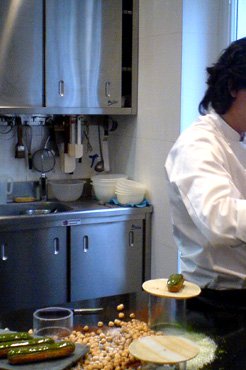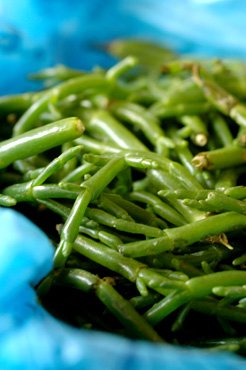I am just a few days — three, to be terrifyingly exact — away from delivering the manuscript for my second book*, and although it is nowhere near as stressful a time as it was for my first (why do I sound like a young mother all of a sudden?), it is still a time of waking up bright and early and working intently through the day, with a few necessary breaks to shower, lunch, and take a few steps around the room when my foot has fallen asleep. (Not that I need it to help me write, but I wish it were more supportive.)
I have little time to cook, but I still have to eat, otherwise I die and my publisher is not happy, so my strategy is to prepare big bowls of salads that will make a few meals. I still have deep and sincere feelings for the grated carrot salad with avocado that got me through my last hang-in-there episode last spring, but this quinoa salad is the new teacher’s pet.
It uses quinoa, generally considered to be the nutritional superhero of grains, but it doesn’t use any old kind of quinoa, no: it uses red quinoa, which is enough to make the most blasé of your health nut friends go, “Oooh, fun!”
I might add here that red quinoa is not so much red as it is reddish brown, or mahogany. (I’ll admit that the first color comparison that presented itself beneath my fingertips was “dried blood”, but I am told that it is not a food-friendly image.) I spotted it at the organic store right by the regular quinoa, and thought, “Oooh, fun!” so I bought a package.
Because of color considerations, and because quinoa, red or otherwise, has a thinly crunchy personality, I chose to complement it with the moist plumpness of roasted red bell peppers, which we all know are very easy to make (see below).
A little more protein was needed to make this a meal-in-a-bowl type of salad, so I added cubes of smoked tofu (the Tossolia brand; I am addicted to this stuff, and I live in the fear that they will discontinue it or change the recipe, like they did with my sesame seitan burgers). But then the textural balance was leaning too heavily on the soft/tender side, so I threw in some toasted pine nuts to crunch it back up.
And the result, I’m happy to say, is just plain good, flavorful and satisfying, which is a lot more than I can say about the zucchini flans I attempted to make yesterday night, to disastrous results. (We fled and went out to eat.)
* Clotilde’s Edible Adventures in Paris is a book on Paris restaurants and food shops, with recipes. It was published in the US by Broadway Books in April 2008.
Continue reading »








